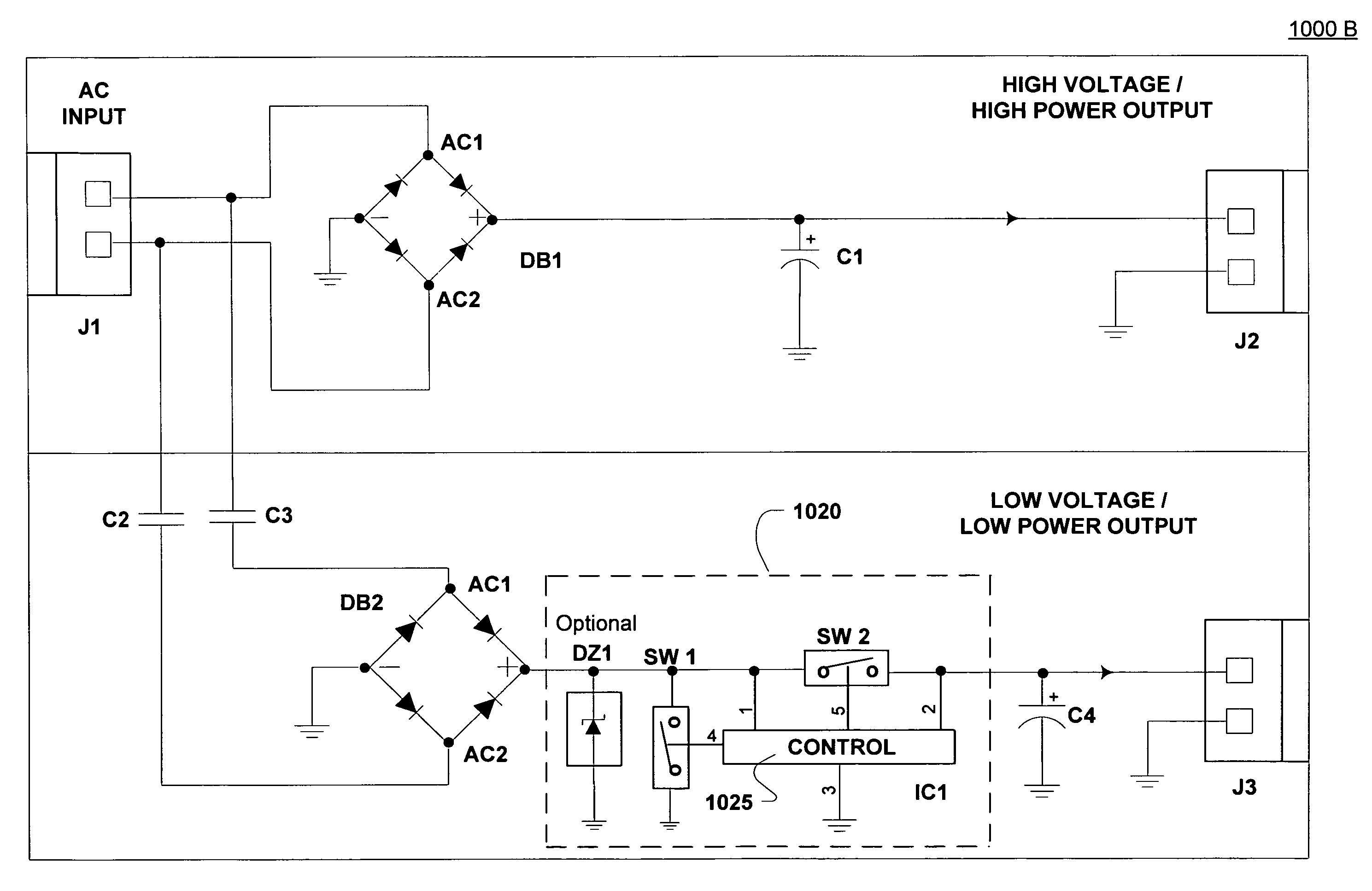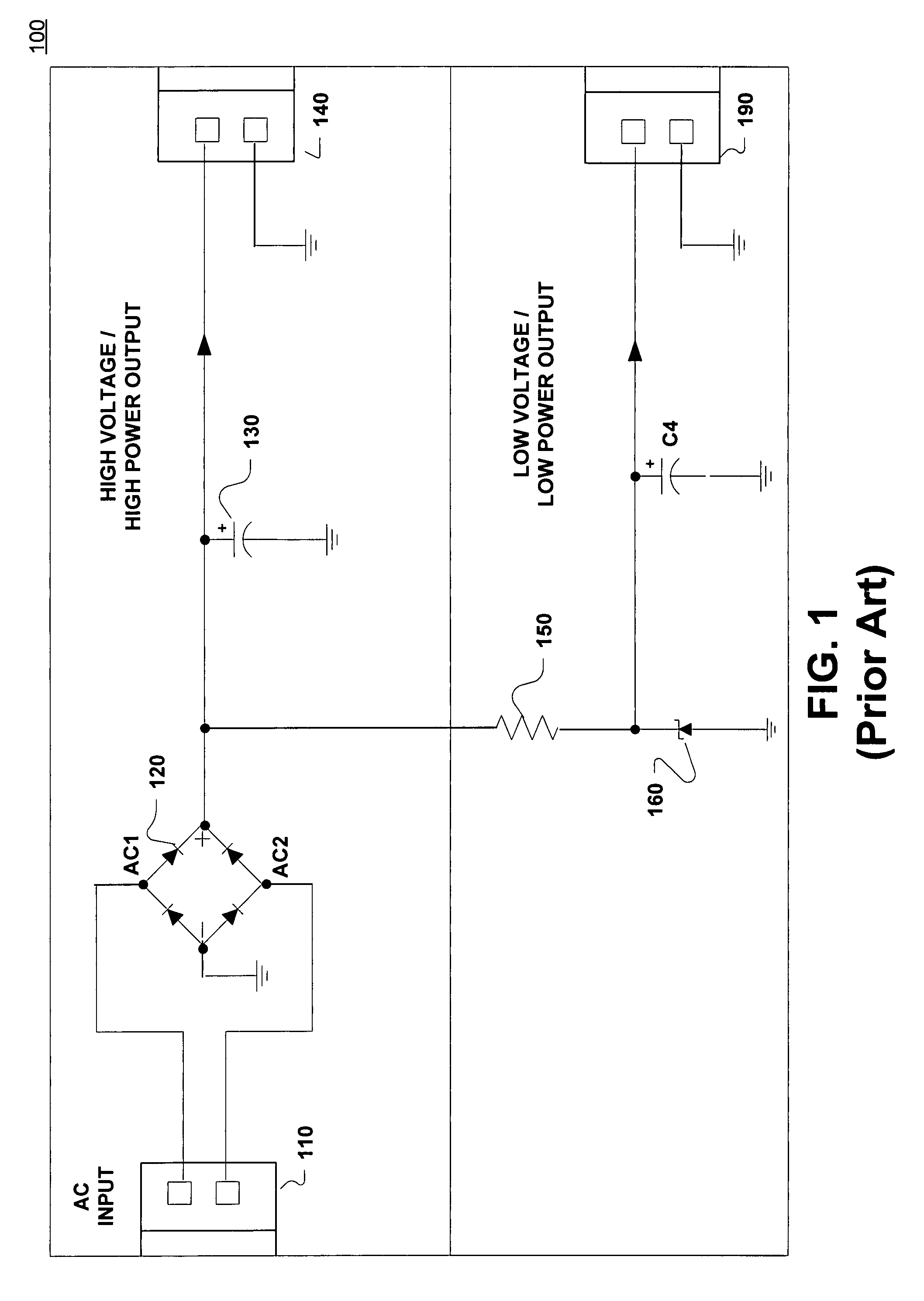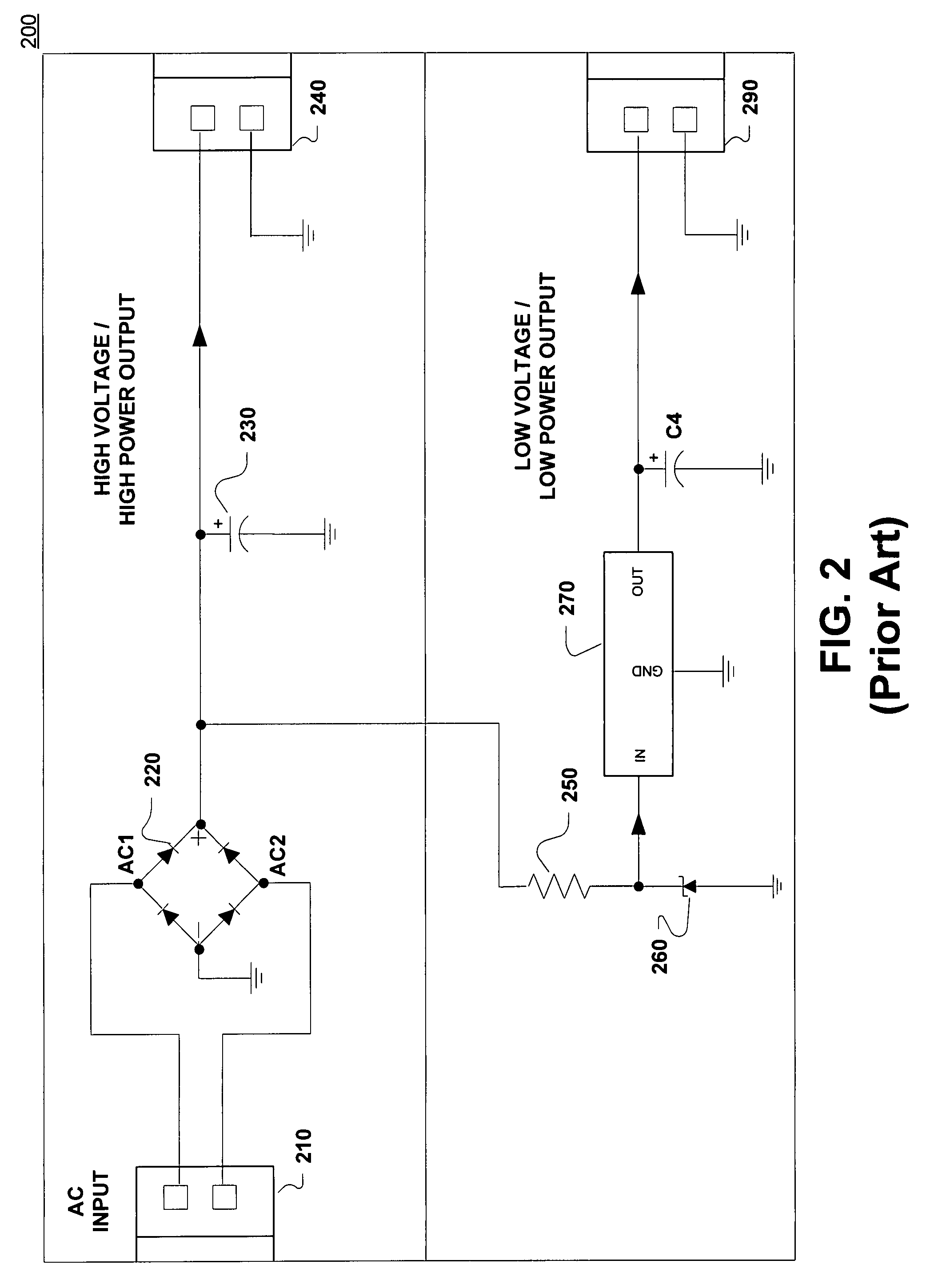Power circuit for generating non-isolated low voltage power in a standby condition
a power circuit and standby condition technology, applied in the direction of electric variable regulation, process and machine control, instruments, etc., can solve the problems of high standby high power consumption of electronic devices, so as to reduce the voltage and reduce the voltage
- Summary
- Abstract
- Description
- Claims
- Application Information
AI Technical Summary
Benefits of technology
Problems solved by technology
Method used
Image
Examples
Embodiment Construction
[0033]Reference will now be made in detail to the preferred embodiments of the present invention, a power circuit for generating a non-isolated low voltage power supply in standby conditions, examples of which are illustrated in the accompanying drawings.
[0034]Accordingly, various embodiments of the present invention disclose a power circuit that generates a non-isolating low voltage power supply in standby. Embodiments of the present invention are able to generate a low voltage power supply that is significantly lower than 1 watt in tandem with a high voltage output. In many cases, a lower voltage and lower power level output is required in tandem with a high voltage output for a power circuit that provides power to an electronic device. The lower voltage may be required, for example to start-up the switching power supply circuit from a standby condition.
[0035]Embodiments of the present invention can be implemented on any electronic system running in standby mode. The electronic sy...
PUM
 Login to View More
Login to View More Abstract
Description
Claims
Application Information
 Login to View More
Login to View More - R&D
- Intellectual Property
- Life Sciences
- Materials
- Tech Scout
- Unparalleled Data Quality
- Higher Quality Content
- 60% Fewer Hallucinations
Browse by: Latest US Patents, China's latest patents, Technical Efficacy Thesaurus, Application Domain, Technology Topic, Popular Technical Reports.
© 2025 PatSnap. All rights reserved.Legal|Privacy policy|Modern Slavery Act Transparency Statement|Sitemap|About US| Contact US: help@patsnap.com



